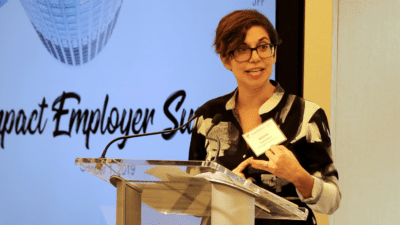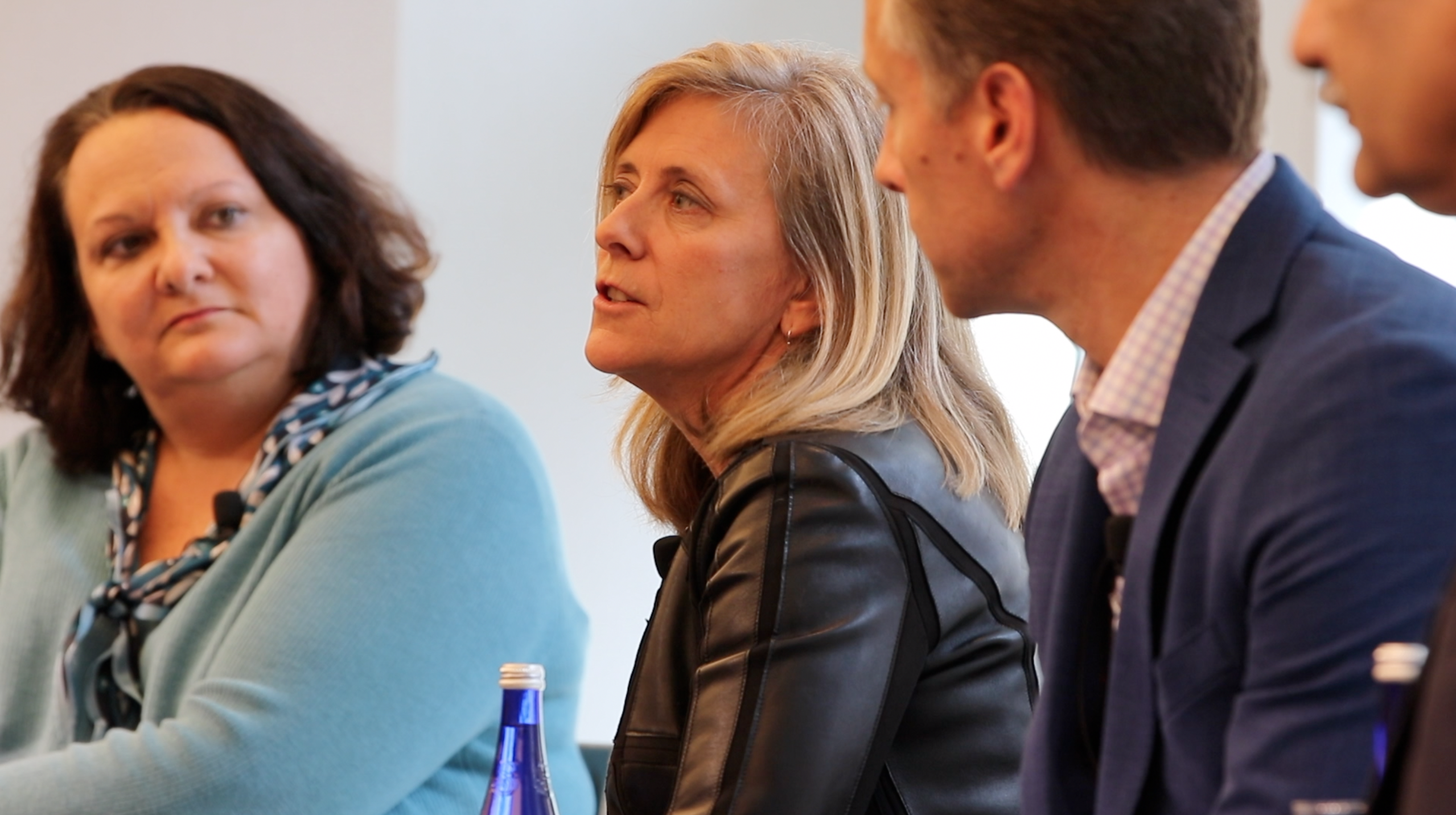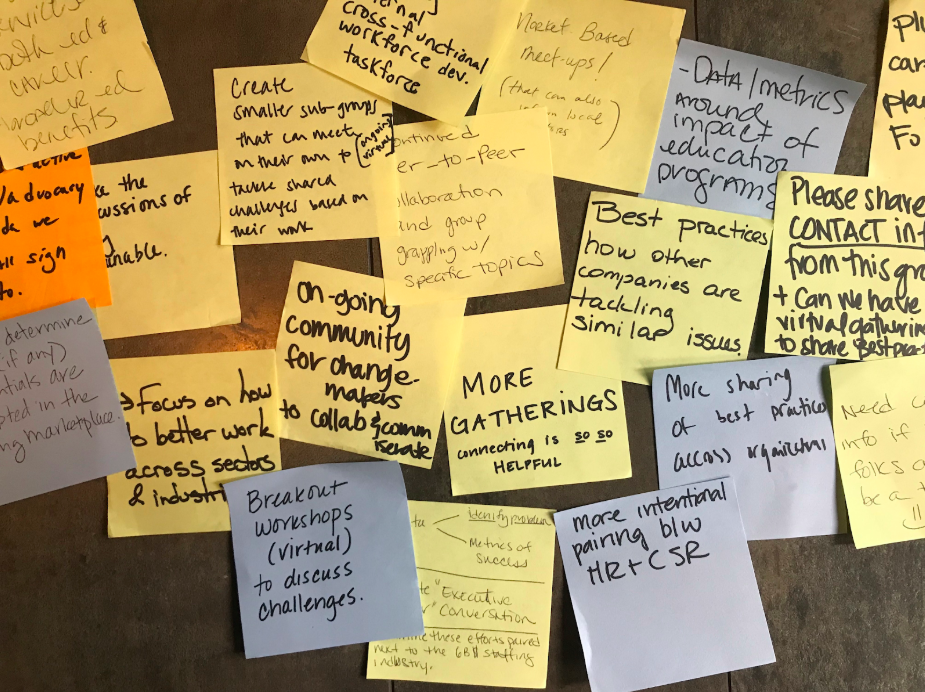The attendees included corporate social responsibility, human resources, and operations executives from Fortune 500 companies representing a mix of industries. Representatives of financial services firms Goldman Sachs and Capital One and software vendors Microsoft and Workday collaborated with colleagues from the likes of Wayfair, JetBlue, and Panasonic.
We heard from Alan Murray, the CEO of Fortune; Scott Pulsipher, the president of Western Governors University; Anant Agarwal, the CEO of edX; and Shannon Hobbs, the head of global talent management at JPMorgan Chase.
We were blown away by what happened when we got these leaders together in a room. We learned a lot about what they need, and we’re building our Corporate Action Platform to support them as they move forward.





